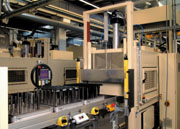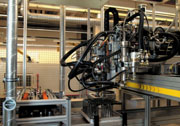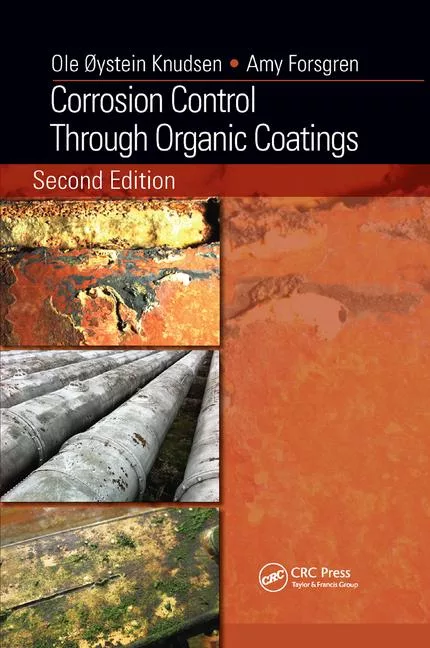Temperature Control, Dispensing Precision Key to Auto-Component Assembly

Kern-Liebers Dispensing Technology developed a solution for this very difficult application in cooperation with the manufacturer of the ignition modules. During system development, attention is focused on temperature monitoring since acceptable results can only be obtained when specified temperatures are stringently maintained. System temperature is continuously monitored at 20 measuring points and corrected if necessary. Both material reservoirs are temperature-controlled, one at 80 deg C, the other at 60 deg C, preventing the formation of bubbles and allowing the material to reach the required fluidity.

Curing takes place in two 5-meter, continuous furnaces, the first at 80 deg C and the second at 120 deg C. Overly high temperatures are also not permitted since the module electronics are temperature-sensitive and can be ruined by excessively high temperatures. The system controller has the temperature indicators along with pressure sensors for the material reservoirs. The operator keeps all system data in sight because it is displayed on a monitor at the loading and unloading position.
While the primary issue was handling the difficult encapsulating material in the ignition-module application, another current project requires speed as the key to success. Foamed gaskets are applied to connectors in a system without a human operator; the cycle time is 2.8 seconds.
For more information on dispensing systems and their various applications, contact Mike Erby, Kern-Liebers USA Inc., 1510 Albon Road, Holland, OH 43528; phone 419-865-2437; fax 419-865-2738; e-mail merby@kl-usa.com; or visit the Web site www.kern-liebers.com. Or Circle No. 204
Links
Looking for a reprint of this article?
From high-res PDFs to custom plaques, order your copy today!



